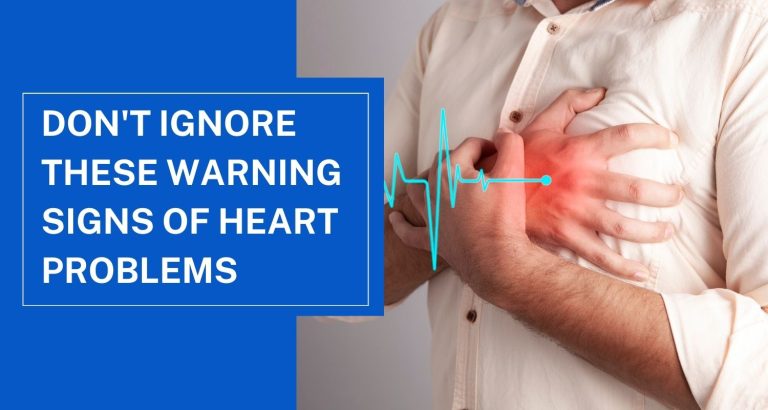What Are The Side Effects of Vaping; Everything Explained

Vaping is popular among individuals who are looking for an alternative to traditional smoking. It is a well-known fact that smoking can be dangerous to health and lead to several ailments. This is one of the prime reasons why people prefer vaping over traditional smoking.
However, you might not know that vaping can also lead to several side effects. In this write-up, we will explore what are the side effects of vaping and knowing about them can be useful.
What is Vaping?
Before learning the side effects of vaping, let us first know what vaping is. Vaping, an acronym derived from “vapor,” refers to inhaling & exhaling an aerosol produced by an electronic cigarette or vaping device.
Contrary to popular belief, this aerosol contains water vapor and other substances, including nicotine, flavorings, and chemicals that could make up its composition.
Vaping devices usually work by heating a liquid to generate an aerosol. This “e-juice,” as it is popularly referred to, typically includes nicotine, propylene glycol, vegetable glycerin, and flavorings, unlike traditional cigarettes, which burn tobacco.
Vaping devices thus offer people looking for safer alternatives to smoking, an alternative that doesn’t burn it directly.
Side Effects of Vaping
Vaping has quickly become a trend among the younger generation, yet its potential health consequences should not be taken lightly. Many users often ask, “What are the side effects of vaping?” As more research emerges, a clearer picture of these potential adverse health impacts is emerging.
Short-Term Effects
Vaping has short-term side effects. Users often report throat irritation, dry mouth, and coughing shortly after using. This is likely attributed to inhaling vape vapor containing various chemicals and flavorings.
Although these side effects may only be temporary and mild for some individuals, for others, they could signal the start of more serious health conditions.
Respiratory Issues
Vaping can have serious repercussions for respiratory health. E-cigarette aerosol contains particles that may damage lung tissue, leading to symptoms like wheezing, shortness of breath, and increased susceptibility to respiratory infections.
Studies suggest these particles could also contribute to lung inflammation and worsen pre-existing respiratory conditions such as asthma or COPD. [1]
Cardiovascular Risks
E-cigarette nicotine poses significant threats to cardiovascular health. Nicotine, a stimulant, can raise blood pressure and heart rate, creating additional strain on the heart over time and contributing to heart disease or increasing the risk of heart attacks or strokes.
Research has identified changes in blood chemistry as well as increased potential for arterial hardening as possible additional cardiovascular risks from vaping.[2]
Oral Health Issues
Vaping can have adverse impacts on oral health. Users may experience gum inflammation, dry mouth, and an increased risk of tooth decay.
Furthermore, vaping vapor may disrupt the balance of oral bacteria, resulting in bad breath and other dental issues; long-term vaping has even been linked with an increased risk of periodontal diseases.
Mental Health and Addiction
Nicotine can alter brain chemistry in adolescents whose brains are still developing, leading to addiction, which could potentially have adverse impacts on cognitive functions as well as mental well-being.
Side Effects of Vaping Nicotine
Vaping nicotine has gained popularity as an innovative solution to traditional smoking, receiving widespread admiration for its safety and convenience. But, it’s essential that users fully investigate any potential side effects associated with vaping nicotine e-liquids used with vape devices.
Understanding Nicotine in Vaping
Nicotine is an addictive chemical associated with cigarettes; in vaping, it’s delivered vaporized and offers a similar addictive effect without burning tobacco.
While vaping has gained increasing popularity over smoking as an alternate delivery system for nicotine, health professionals remain concerned over its safety and potential side effects of use.
Addiction and Dependence
One of the biggest side effects of vaping nicotine is its potential to become addictive. Nicotine’s presence causes dopamine release, an endorphin-related neurotransmitter associated with pleasure and reward that causes dependence.
Users may find themselves vaping more frequently to maintain levels in their system – leading to a cycle similar to traditional smoking that leads to addiction.
Impact on Brain Development
Nicotine exposure during critical developmental stages could impede learning, memory, and attention abilities and cause lasting problems that have long-term repercussions.
Withdrawal Symptoms
Users attempting to quit or reduce vaping often experience withdrawal symptoms caused by nicotine dependence. These include irritability, anxiety, difficulty focusing, and intense cravings for nicotine – making the task of quitting vaping more challenging than anticipated and leading to repeated attempts.
Vaping Weed Side Effects
Vaping cannabis concentrate or flower has quickly gained in popularity as a safer and more discreet alternative to smoking cigarettes.
Vaping produces less harsh vapor that doesn’t enter the lungs directly compared to combustion-smoking methods like cigarettes. But its side effects must also be considered before engaging with this modern consumption method.
Physical and Psychological Side Effects
One of the immediate physical and psychological side effects associated with vaping weed is an increase in heart rate, which may pose health concerns for people with existing heart conditions.
Users also report dry mouth and red eyes due to cannabis use, but these effects become even more pronounced with vaped marijuana use. Furthermore, vaping may cause short-term memory impairment as well as altered motor skills that hinder daily tasks safely.
Furthermore, cannabis with high THC (Tetrahydrocannabinol) content may produce psychoactive effects that include enhanced sensory perception and altered time perception and, in some instances, may increase anxiety or paranoia among novice users or those predisposed to mental health conditions.
Long-Term Health Considerations
Vaping weed side effects have increasingly come under scrutiny by health professionals. Long-term inhalation of concentrated cannabis vapor could potentially cause chronic bronchitis as well as lung irritation and an increased risk of respiratory infections.
Studies are still ongoing as to its long-term impact. However, early evidence points towards possible harm being done to lung health as a result of regular vaping.
The psychological impacts of chronic use can also be profound. Regular, heavy use of high-THC cannabis via vaping can increase or contribute to mental health issues.
These issues are anxiety, depression, and psychosis, particularly among adolescents and young adults whose brains are still maturing. This particularly concerns adolescents and young adults as their brains continue to form and mature.
Prevention and Mitigation Strategies to Counteract Vaping Side Effects
After knowing what are the side effects of vaping, it is imperative to know about the prevention strategies to maintain good health. Though vaping may appear safer than smoking, it is important that measures be implemented to guard against its health risks.
Education about Risks
Awareness is essential to mitigate the adverse health impacts associated with vaping. Informing users, particularly young adults and teens, about its potential dangers can deter new initiation or motivate cessation efforts.
Campaigns that aim to raise awareness about the various harms of vaping, including respiratory problems and addiction, should be comprehensive in their approach.
These educational efforts need to go beyond schools and universities and should be integrated into community outreach programs to reach a broader audience.
Regulating and Monitoring Vape Products
By implementing and closely checking rules for vape products, we can greatly reduce their negative effects. This includes establishing guidelines for how e-liquids and devices are made, limiting the amount of nicotine they can contain, and forbidding the use of dangerous ingredients.
When health authorities regularly oversee these rules, it helps make sure they are followed, which in turn lowers the chances of harmful effects that come from vaping.
Promoting Healthier Alternatives
People who are trying to quit smoking by using vaping should consider using safer and more effective options instead. Treatments like Nicotine Replacement Therapy (NRT) – which includes things like nicotine patches or gum – along with psychological support, can be better and less risky choices.
These alternatives help overcome addiction without exposing users to the negative health effects that vaping can have.
Accessing Professional Help and Resources
It’s important for people who have bad reactions from using e-cigarettes (vaping) to have easy access to medical help and support for quitting. This help can include calling support hotlines, getting counseling, and joining programs specifically for people who want to stop vaping.
Talking to healthcare experts can help reduce the negative effects and offer support to those trying to quit.
Implementing Strict Age Restrictions
Making sure that there are strict age limits is really important to stop young people from starting to use vaping products, as they are especially at risk of the bad effects.
Along with this, there should be laws that punish anyone who sells these products to kids, which will help lessen the chances of young people getting them.
Conclusion
As of now, your prime question, such as what are the side effects of vaping, might be answered with this write-up. Not only this, but we have also talked about the effects in different manners and how to combat them. Also, it is suggested to get in touch with professionals to learn more about the adverse effects of vaping.
As research sheds light on the complexities of vaping-related health concerns, individuals must prioritize their health and make decisions that align with their well-being in the long run.
What Are the Side Effects of Vaping – Frequently Asked Questions (FAQs)
Is Vape Worse Than Smoking?
In addition to nicotine, the aerosol from e-cigarettes may also include harmful chemicals. This includes microscopic particles that pierce deep into the lungs and substances that cause cancer. However, compared to smoke from burnt tobacco products, the aerosol from e-cigarettes often contains fewer dangerous compounds.
How Does Vaping Affect the Body?
Many harmful substances, such as formaldehyde, acrolein, and acetaldehyde, are produced by e-cigarettes. In addition to other disorders, vaping may harm organs and create breathing difficulties and addiction.
Is There a Healthy Vape?
Currently, the FDA has not authorized any vaping product to prevent, treat, or enhance any health condition or general well-being. However, there are several vape brands that have less nicotine amount and can be less harmful.
Does Vaping Have Any Benefits?
Compared to smoking cigarettes, vaping exposes consumers to significantly fewer and lower amounts of pollutants. Making the switch to vaping lowers your exposure to pollutants that may lead to lung illness, cancer, and circulatory and cardiac disorders, including heart attacks and strokes.
Do You Lose Weight With Vaping?
Nicotine-containing vapes have the potential to both reduce and stop weight gain. Nevertheless, vaping has potential health hazards and is not a sustainable weight loss strategy. Nicotine may speed your metabolism while lowering hunger and food intake.
How Many Puffs of Vape Is Equal to a Cigarette?
A typical smoker takes 10 to 15 puffs in five to eight minutes to complete a cigarette. A vaper using a standard refillable pod device with a 5% nicotine e-liquid may need 30 to 50 puffs to get the same quantity of nicotine.
Can Vaping Cause Acne?
Vegetable glycerin and propylene glycol in vape juice can clog pores. Chemicals and other tastes might irritate the lining of pores and skin. Also, poor nutrition, dehydration, or vitamin deficiencies—all of which are linked to acne—may be indirectly caused by vaping.
Is It Safe to Vape Without Nicotine?
Overall, vaping may be hazardous, even when nicotine is not present. It may cause health problems by irritating the throat and lungs and bringing contaminants into the body.
References
- Schiliro M, Vogel ER, Paolini L, Pabelick CM. Cigarette smoke exposure, pediatric lung disease, and COVID-19. Frontiers in physiology. 2021 Apr 27;12:652198.
- Vajdi B, Tuktamyshov R. Electronic cigarettes—myocardial infarction, hemodynamic compromise during pregnancy, and systolic and diastolic dysfunction: Minireview. World Journal of Cardiology. 2020 Oct 10;12(10):475.
Disclaimer: This content, including advice, provides generic information only. It is not a substitute for a qualified medical opinion. Always consult a specialist or your own doctor for more information. Ingredient Fact does not claim responsibility for this information.






